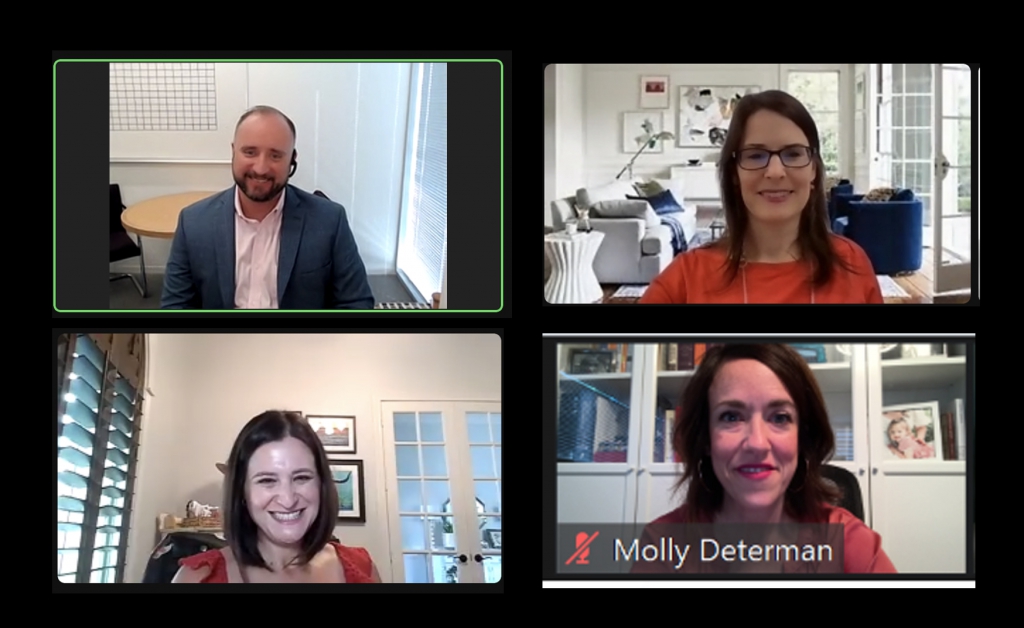
Reinvesting in people, creating strong succession plans at the C-suite level, and understanding best practices for building company culture is not just a strategic imperative, it’s the cornerstone upon which the future success of an organization is built.
The need for a well-prepared leadership pipeline has never been more pronounced, said speakers at the Strategies for Effective Succession Planning virtual event on August 21, sponsored by the Energy Workforce Human Resources Committee.
Committee Chair Dawn Keske, Oceaneering, and Energy Workforce President Molly Determan kicked off the meeting with speakers from Heidrick & Struggles: Energy Workforce Advisory Board Member Doug Orr, Partner & Global Energy Sector Lead, Houston and Laryssa Topolnytsky, Partner, Toronto.
When talking about reinvestment in the workforce, embedding and incorporating talent management, development and succession planning into the business is an important function of the executive leadership team. It’s a strategic and competitive advantage in the market, for attracting and retaining the workforce.
Orr shared the seven functions of an executive management team, including talent management and development as a top priority, in line with corporate vision and strategy, and external stakeholder management.
“This is not an HR initiative. When done properly, this is truly the work of the leadership team within an organization that is complemented with different skill sets.”
Advisory Board Member Doug Orr, Heidrick & Struggles
BUILDING A TALENT PIPELINE
Too often, companies look at the skill sets they need today or tomorrow, without looking at future roles and what kind of skills are appropriate for a dynamic environment.
“Thinking holistically and collectively around the organization is preparing for the future and identifying gaps,” Orr said.
Topolnytsky underlined the importance of a multifaceted approach that takes into account different viewpoints and expertise.
“The theme along all of these things, and it’ll come up over and over again, is the value of thinking ahead. And doing this continually. Prepare your company en masse to think and perform in a way that drives strategy,” she said.
Orr said that in the short term, companies have been focused on plugging gaps in their workforce, after years of weathering a downturn that forced reduced headcount. Investing in employees includes defining leadership success criteria, instead of promoting people based on their success in their old roles.
“For a long time, we’ve seen the development of people take a backseat. And we’ve streamlined the organization so much that for leadership positions, we’ve added multiple layers of responsibility on individuals as we shrunk the layers and flattened organizations,” he said.
Orr suggested companies reprioritize and refocus on the workforce by being intentional in having the right job descriptions and responsibilities defined for the role as it currently stands and will be in the future, including compensation in the process. He recommended these steps:
- Focusing on Culture: Not just talking about it, but living by it
- Collaboration and Influence: Leaders should collaborate across functions and organization levels
- Learning Through Exposure: Develop leaders through interactions and relationships with colleagues, experts, customers, etc. Place individuals in stretch roles to increase their exposure to other parts of the business
- Learning Through Knowledge Sharing: Open communication should include a culture that encourages all levels to speak up and contribute to solutions
- Senior Business Leaders Own Their Succession Process: Work in conjunction with HR, but the onus of accountability belongs on senior leadership
SUCCESSION PLANNING
Orr emphasized the need to bridge the gap between development and succession planning and the broader business strategy. Traditionally, these aspects of human resource management have often operated in silos. By weaving them seamlessly into the fabric of an organization’s culture, they become a strategic asset that can set a company apart.
“It’s about helping our people be at their very best and find purpose in their roles,” Orr stated. “This isn’t just about reaching the top; it’s about enhancing the entire workforce’s potential and making it a fundamental part of our corporate DNA.”
Orr shared the core elements of a best-in-class CEO succession, including company strategy, a future CEO profile, industry market analysis and internal candidate assessment.
Topolnytsky said Heidrick’s recommendation is to promote from within.
“The upside is they know the culture and ecosystem of the organization. Part of that planning is providing additional support and a framework of tools and language so that the leader who has the inherent ability and capacity to be CEO in two to three years receives additional development, including role transition and impact, rotations through assignments, coaching and other mechanisms,” she said.
Both speakers shared that robust leadership assessment is at the core of the approach to succession management. A leadership framework should allow for a holistic assessment of four key dimensions of the thriving leader experience: culture/fit, capability, agility and potential.
This two-hour discussion will be continued at the upcoming People & Culture Seminar, which will include a roundtable discussion of succession planning, a pay equity discussion with Christian Antkowiak with Buchanan, Ingersoll & Rooney, as well a focus on balancing culture across global organizations.
If you are interested in engaging further with this topic or joining the HR Committee, contact Director of Operations Roni Ashley.
Roni Ashley, Director Operations, writes about the Energy Workforce’s membership, workforce development and more. Click here to subscribe to the Energy Workforce newsletter, which highlights sector-specific issues, best practices, activities and more.




